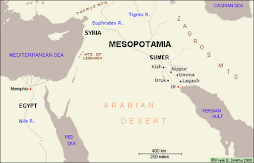Hunting and Gathering societies
His time was in the Neolitic, the lifestyle was the Males probably traveled long distances to hunt and capture larger animals. Females hunted smaller animals, gathered plants, made clothing, protected and raised children, and helped the males to protect the community from rival groups. And special features were Hunting and gathering societies primarily survive by hunting animals, fishing, and gathering plants. The vast majority of these societies existed in the past, with only a few (perhaps a million people total) living today on the verge of extinction.
Pastoral societies
Members of pastoral societies, which first emerged 12,000 years ago, pasture animals for food and transportation. Pastoral societies still exist today, primarily in the desert lands of North Africa where horticulture and manufacturing are not possible.  Su estilo de vida era el trabajo pastoril.
Su estilo de vida era el trabajo pastoril.
Horticultural societies
Unlike pastoral societies that rely on domesticating animals, horticultural societies rely on cultivating fruits, vegetables, and plants. These societies first appeared in different parts of the planet about the same time as pastoral societies.Agricultural societies
Agricultural societies use technological advances to cultivate crops (especially grains like wheat, rice, corn, and barley) over a large area. Sociologists use the phrase Agricultural Revolution to refer to the technological changes that occurred as long as 8,500 years ago that led to cultivating crops and raising farm animals. Increases in food supplies then led to larger populations than in earlier communities.
Feudal societies
From the 9th to 15th centuries, feudalism was a form of society based on ownership of land. Unlike today's farmers, vassals under feudalism were bound to cultivating their lord's land. In exchange for military protection, the lords exploited the peasants into providing food, crops, crafts, homage, and other services to the owner of the land. The caste system of feudalism was often multigenerational; the families of peasants may have cultivated their lord's land for generations.
Industrial societies
Industrial societies are based on using machines (particularly fuel-driven ones) to produce goods. Sociologists refer to the period during the 18th century when the production of goods in mechanized factories began as the Industrial Revolution. The Industrial Revolution appeared first in Britain, and then quickly spread to the rest of the world.
Postindustrial societies
postindustrial society based on information, knowledge, and the selling of services. That is, rather than being driven by the factory production of goods, society is being shaped by the human mind, aided by computer technology. Although factories will always exist, the key to wealth and power seems to lie in the ability to generate, store, manipulate, and sell information.




0 Response to "Types of societies"
Publicar un comentario